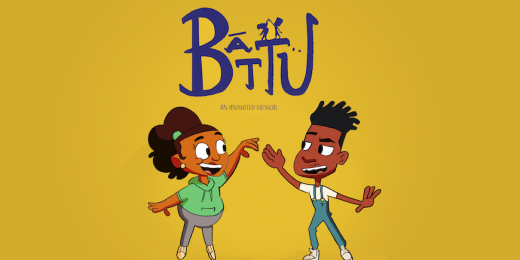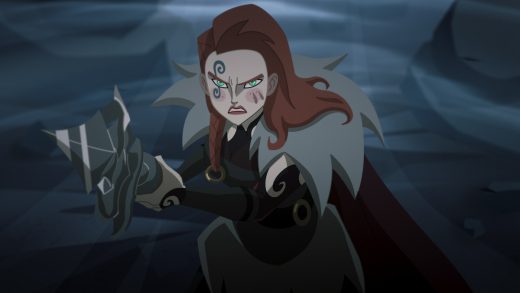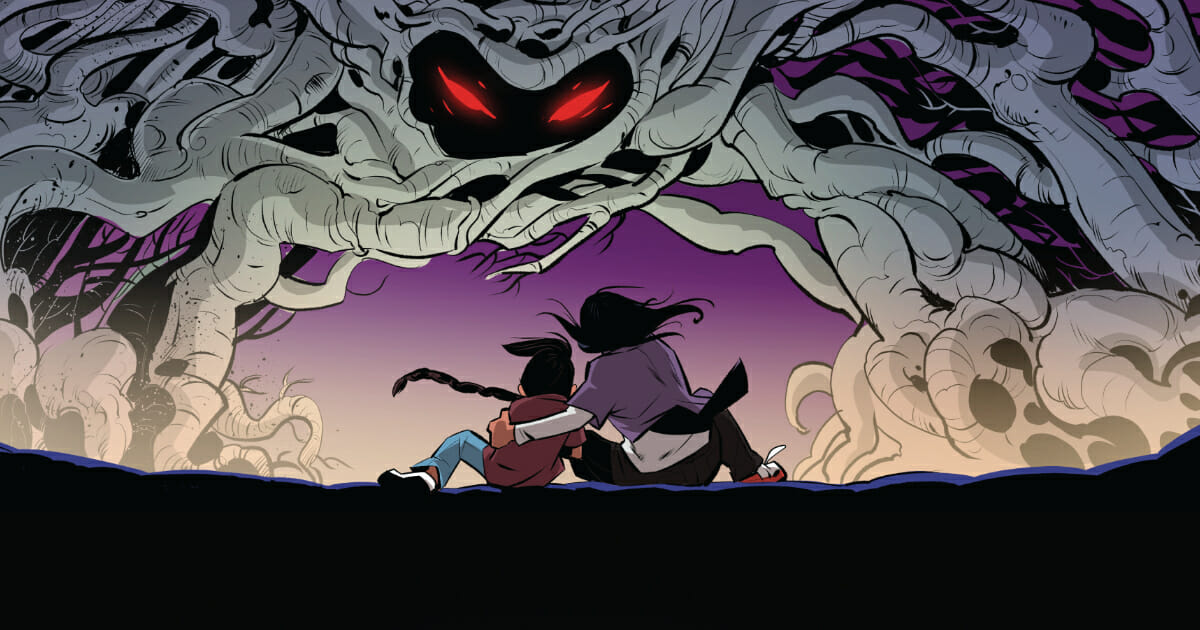
Keya brings Brazil’s native culture to the fore in a new supernatural animated film in development from Claudio Martins, that incorporates indigenous storytelling into an enchanting animated tale. The story follows a teenager, Ana, mysteriously healed after meeting a sacred creature named Keya — and her life transforms. When this sacred creature needs rescuing in turn, Ana begins a journey to save Keya, taking her on an adventure that calls on a cast of friendly supporting characters.
The film in development takes inspiration from aspects of Claudio’s own life, mixed with stories told by his grandmother and her upbringing with the Tupinambá people from the Ibiapaba Mountains of Brazil. This unique set of influences makes Keya‘s trailer an intriguing watch that is just as much a comment on harmony within nature as it is one girl’s personal story. Using traditional animation methods and hand-painted backgrounds alongside advanced techniques in Toon Boom Harmony, Claudio and his team create a compelling visual style for the film’s proof-of-concept trailer.
We spoke to Claudio to discuss the project. After outlining Keya’s plot, he introduced us to some of the team members who helped him bring the unique concept to life in the trailer. Providing insight into the animatic, character rigging and compositing stages, Claudio is generous with tips and advice for animators new and experienced alike. Enjoy the trailer for Keya below, and read on for the full interview.
Hi Claudio, please introduce Keya with a brief synopsis of the story…
Ana, a teenager, receives a visit from a sacred Black Forest turtle. After a new moon night, Ana notices sacred pictograms emanating from the turtle’s shell, which intrigues her. Ana recovers every day from a physical injury and her life transforms. However, the creature falls ill, and is taken by her Aunt Joana to the nearest village, without Ana knowing. Ana runs away on a journey to find Keya; her new hope in the old villages.
Keya is a sacred animal that comes to connect with the humans. She wants to restore balance in nature, so she found Ana. On the other hand, Ana doesn’t know anything about her culture or her ancestors, which leads to a revelation within the film.
What can audiences expect when they see Keya?
The film is an original story with a unique character that portrays indigenous stories in a new world of adventure. Keya is inspired by some facts of my life, other facts of my grandmother who was an indigenous Tupinambá from the Ibiapaba Mountains, and myths that I researched around the world and in Brazil.

The trailer is beautifully put together. Can you describe the characters?
We can see some main characters in the trailer. Ana, who is an indigenous descendant. Her new friend, Yacatan, is the cousin of her aunt. The history teacher, Macá. Each of them has a story that complements each other in the film.
Can you introduce the team members who worked on Keya, and their roles on the project?
They are the best people in the world. These were super-dedicated people working on the trailer. Me, directing and scripting and supervising animation. Emilio Utrera, who had done the character concepts for the comics we adapted. Rosinaldo Lages, who was responsible for animation, animatic and some art direction, and brought in his experience, having worked on a Disney animated feature. Lucas Galvão, who has already worked on concept art for shorts and films, and gave the scenes life, saturation and a colour palette that I imagined for the film. And the conductor and musician Thiago Gobet, who with his musical excellence and talent made a sensational track that took my breath away, creating a great sense of expectation at the end of the trailer.
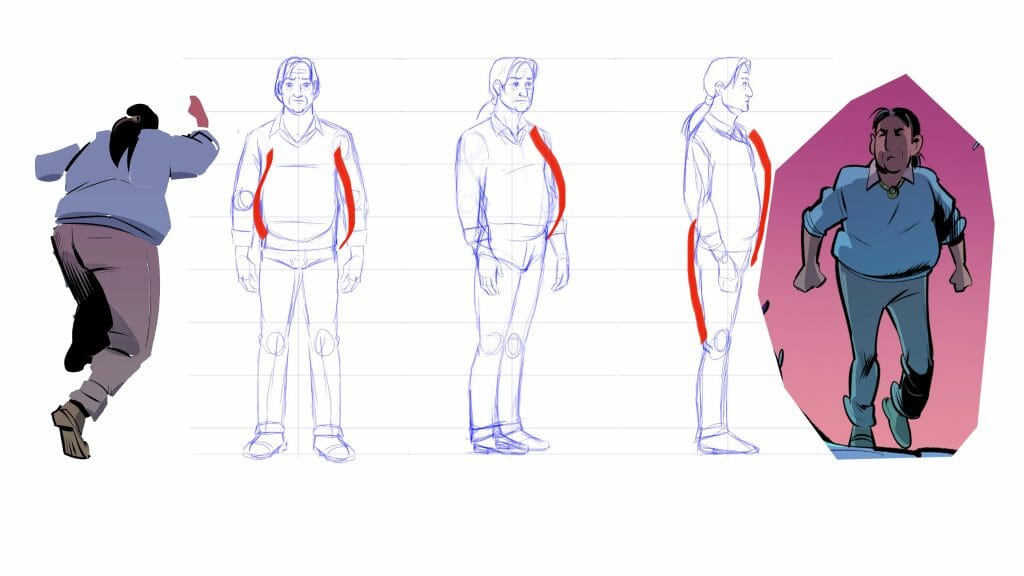
Can you tell us the animation process behind Keya‘s visual style?
We took two months to produce the trailer. Even though it’s only 45 seconds, it features hand-painted backgrounds, with cut-out animation on the characters, and a huge amount of traditional animation work in its effects. We performed shadow and light tests before animating everything. And an animatic was also made for the timing. I really wanted the score to match the rhythm of the scenes and create the suspense appeal at the end.
How did Toon Boom Harmony help in this process?
I chose to use Toon Boom Harmony because of the practicality and ease of composing within the software. We used Harmony to do all the animatic, character rigs, and compositing in real-time, which saved us a lot of time, instead of going to another software and having to reassemble everything to export for editing. In addition to doing some special effects, it was possible to create the lively night atmosphere in Harmony itself.
Toon Boom Harmony was our main production tool. From vector strokes, where we were able to test various effects without having to leave the software. The tones and palettes were easy to adjust and we tested it until we got it to the point I wanted.
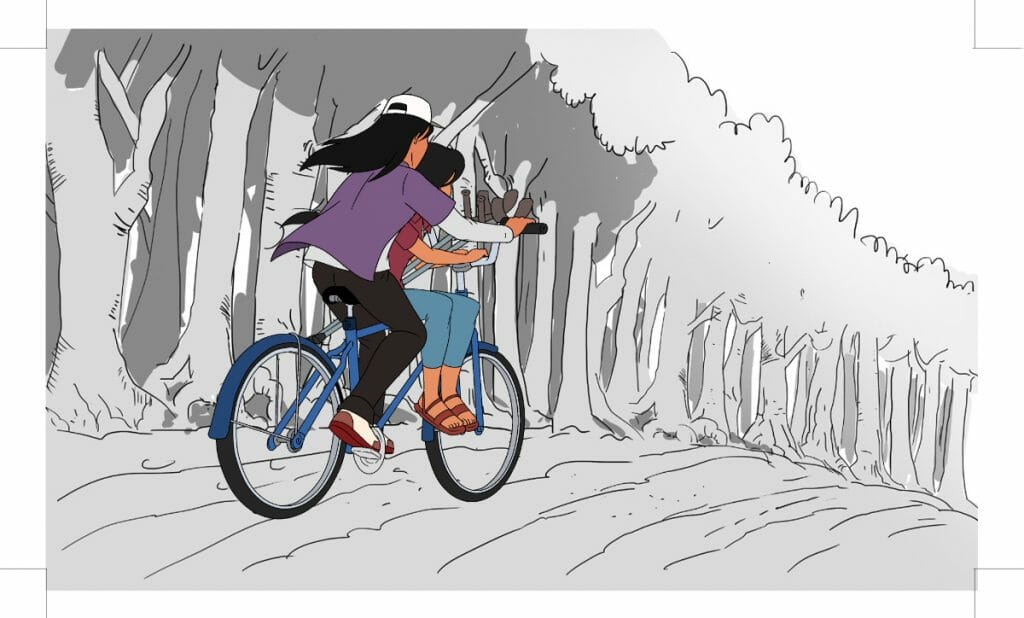
What are some surprises to watch out for in Keya?
Keya is a story full of twists. It is an adventure with a lot of drama, aimed at a young-adult audience. With unique characters and unique designs too, nothing that has been seen before. In addition to portraying indigenous people, it brings an important message about nature, our surroundings and conservation, without cliches or sermons.
When can audiences watch the full film?
Now with the trailer and the graphic bible ready, we finished our development stage. We are participating in public notices and are hoping that we can soon get a budget and resources to start production. Until then, we’ll still be looking for film grants to complement that. We hope that very soon, by 2025, the film will be in theatres or on streaming platforms.


